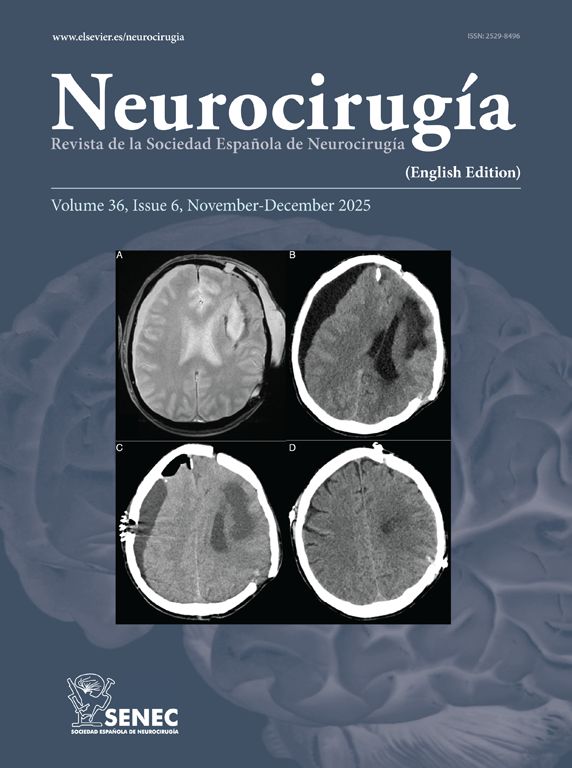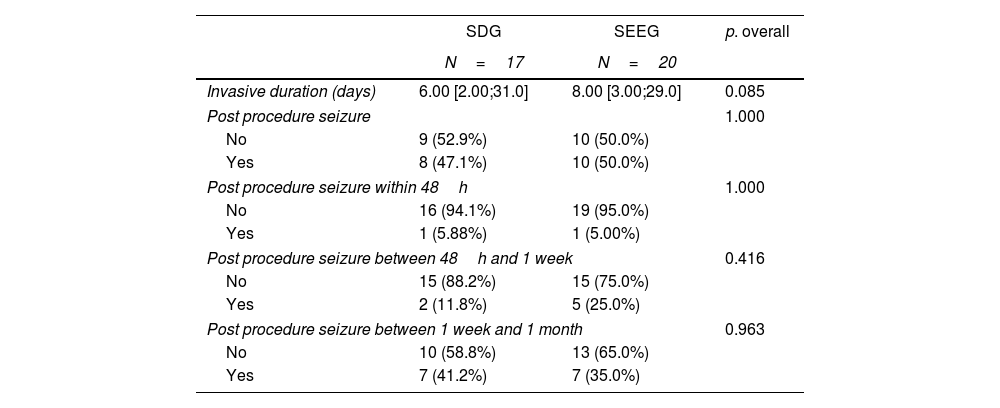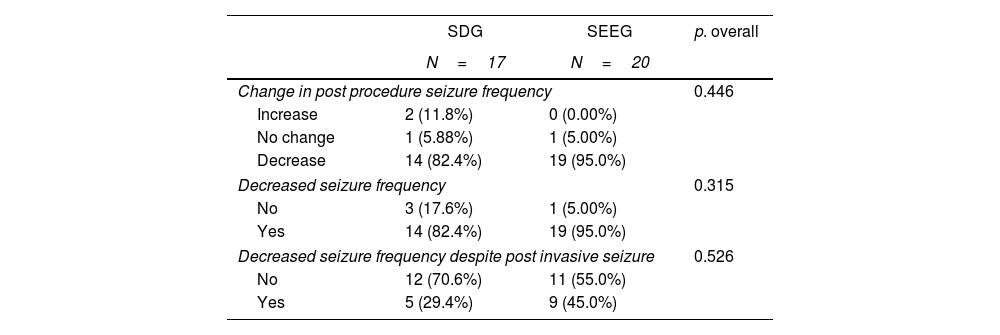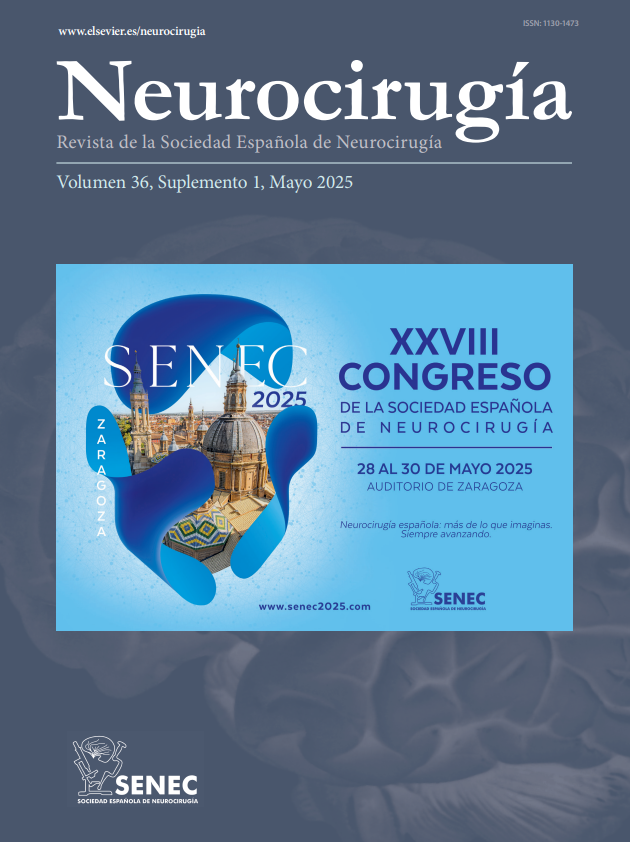To assess if removal of stereoelectroencephalography (SEEG) or subdural grids (SDG) is associated with an increased seizure frequency in patients with refractory epilepsy during the immediate postoperative period.
Methods37 patients with refractory epilepsy that underwent monitoring with SEEG or SDG during November 2012–March 2022 were identified using electronic medical records from a single institution. Seizure history, duration of intracranial monitoring, and monitored brain regions were recorded.
Results5.0% and 5.9% of SEEG and SDG patients had a seizure within 48h post-termination of monitoring. 25% and 11.8% of SEEG and SDG patients had a seizure between 48h and 1-week after surgery. Between 1 week and 1 month after SEEG or SDG removal, 35% and 41.2% of patients had a seizure. 30% and 50% SEEG or SDG patients had a seizure between 1- and 2-months following removal. Overall change in postoperative seizure frequency was not significant. Seizure frequency increased for 11.8% of SDG patients while frequency remained unchanged for 5.9% and decreased for 82.4%. No patients post-SEEG removal in our cohort experienced an increased seizure frequency. 95% experienced a decrease in seizure frequency and no change was observed in 5%.
ConclusionSEEG is not associated with increased epileptogenicity after termination of monitoring. Two patients post-SDG removal experienced an increase in seizure frequency. While patients with refractory epilepsy may continue to have seizures during the immediate postoperative period, it is likely that patients will experience a decrease in seizure frequency after removal of SEEG or SDG.
Evaluar si la extirpación de la estereoelectroencefalografía (SEEG) o de las rejillas subdurales (SDG) se asocia con un aumento de la frecuencia de convulsiones en pacientes con epilepsia refractaria durante el período postoperatorio inmediato.
MétodosSe identificaron 37 pacientes con epilepsia refractaria que se sometieron a seguimiento con SEEG o SDG durante Noviembre 2012 - Marzo 2022, utilizando historias clínicas electrónicas de una sola institución. Se registraron antecedentes convulsivos, duración de la monitorización intracraneal y regiones cerebrales monitoreadas.
ResultadosEl 5,0% y el 5,9% de los pacientes con SEEG y SDG tuvieron convulsiones dentro de las 48 horas posteriores a la terminación del seguimiento. El 25% y el 11,8% de los pacientes con SEEG y SDG tuvieron convulsiones entre 48 horas y 1 semana después de la cirugía. Entre 1 semana y 1 mes después de la extirpación del SEEG o del SDG, el 35% y el 41,2% de los pacientes presentaron con convulsiones. El 30% y el 50% de los pacientes con SEEG o SDG tuvieron una convulsión entre 1 y 2 meses después de la extirpación. El cambio general en la frecuencia de convulsiones postoperatorias no fue significativo. La frecuencia de convulsiones aumentó en 11,8% de los pacientes con SDG, mientras que la frecuencia permaneció sin cambios en 5,9% y disminuyó en 82,4%. Ningún paciente después de la extirpación del SEEG en nuestra cohorte experimentó un aumento de la frecuencia de convulsiones. El 95% experimentó una disminución en la frecuencia de convulsiones y no se observó ningún cambio en el 5%.
ConclusiónEl SEEG no se asocia con un aumento de la epileptogenicidad después de la terminación de la monitorización. Dos pacientes después de la extirpación del SDG experimentaron un aumento en la frecuencia de convulsiones. Mientras que los pacientes con epilepsia refractaria pueden continuar teniendo convulsiones durante el período postoperatorio inmediato, es probable que los pacientes experimenten una disminución en la frecuencia de convulsiones después de la extracción de SEEG o SDG.
Article

If it is the first time you have accessed you can obtain your credentials by contacting Elsevier Spain in suscripciones@elsevier.com or by calling our Customer Service at902 88 87 40 if you are calling from Spain or at +34 932 418 800 (from 9 to 18h., GMT + 1) if you are calling outside of Spain.
If you already have your login data, please click here .
If you have forgotten your password you can you can recover it by clicking here and selecting the option ¿I have forgotten my password¿.















